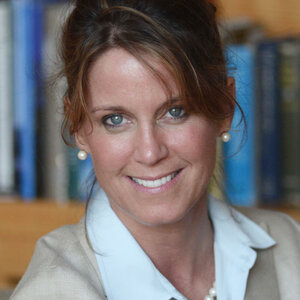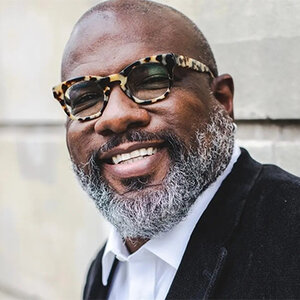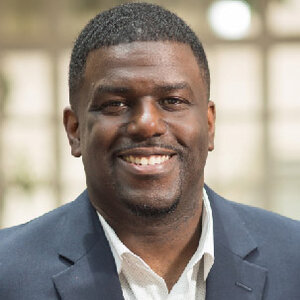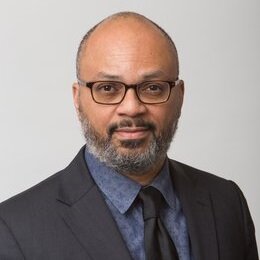Lisa Consiglio, Co-Founder and CEO, Narrative 4: The story behind the exchange
August 18, 2023
Lisa Consiglio helped launch Narrative 4 in 2012 to spark imagination, foster community and connection, and spur civic engagement through mutual understanding of differences among people. Its key tool is the Story Exchange, built on an old acting technique to share stories—literally telling another’s stories by adopting their voice in the first person—and develop one’s ability to see the world from a new perspective. In just over a decade, Narrative 4 has expanded to hundreds of schools across the United States; established programs in roughly two-thirds of the schools in Ireland, where co-founder and author Colum McCann has led the way; expanded its operations to seven countries in the African continent; and is currently running a civic engagement project in Joe Slovo township of Port Elizabeth, South Africa.
PND spoke with Consiglio about the organization’s approach to literacy, sharing perspectives, and enhancing civic engagement.
Philanthropy News Digest: What is Narrative 4 and where is it active?
Lisa Consiglio: Narrative 4 is a global organization. It’s artist-driven, educator-shaped, and student-led. But if I were to really focus on one thing: Narrative 4 is a fun organization that encourages kids to learn about one another and the world in myriad ways. It harnesses the incredible untapped power in young people and inspires them to understand one another from a different perspective.
The core methodology is the Story Exchange. Once students have tapped into someone else’s brain, imagination, life even, they get inspired to learn more. We’re all human and experience the same emotions, and our similarities far outweigh our differences, [though] you would never know that in today’s society. Narrative 4 is designed to break down barriers, shatter stereotypes, and ask us to suspend engagement with the rest of the world for a moment to go into the depths—the deeper meanings of creativity and inspiration—and decide how we want to partner with other kids and really effect change in the world.
The Story Exchange is the on-ramp to a long continuum that includes learning about one another through art, literature, music, and so forth. There is an artist network, where students can engage with artists from around the world.
Narrative 4 is designed to break down barriers, shatter stereotypes, and ask us to suspend engagement with the rest of the world for a moment to go into the depths—the deeper meanings of creativity and inspiration....
The Story Exchange has reached 35 countries. We are in a variety of countries in different ways. For instance, we’re in two-thirds of the schools in Ireland. In the U.S., we run the program in 35 states in 550-plus schools. Our programs have been launched in seven countries in Africa.
PND: How did you get into that many schools in a relatively short time?
LC: There’s a tipping point. Once the kids get excited, the educators get excited, then the administrators pay attention, the superintendents pay attention, and eventually departments of education pay attention. All over the world. In the Bronx, the superintendent paid attention. She [said] this has got to get in every school.
In Ireland, our efforts have been particularly artist-driven. Colum McCann, my co-founder, spearheaded a lot of the work in the early days. We actually have a physical hub in Limerick. There’s a place where kids can come and gather and tell their stories and connect with this sort of “empathy lab” with the rest of the world. It’s a smaller country, obviously, but it spread quickly. Colum had a lot of connections in the art world and beyond, in Dublin and even in Northern Ireland. It spread from the artists driving it forward, but the teachers are shaping it. These teachers are using our programs and projects and they lead them. Administrators are seeing students lighting up in the school, [and as a result] suspension rates are going down, graduation rates are going up. How did we get there? Very carefully. We do expect the other countries to look at Ireland as a prototype or example.
PND: Tells us more about the Story Exchange model. What makes it so strong and effective?
LC: The Story Exchange model is actually an old theater technique; I did not invent it. A colleague of mine introduced the idea to me in 2007 when I was leading a literacy program at the Aspen Institute, and we started running this tiny little thing. English teachers and art teachers were mesmerized.
You’ve got kids waking up. Kids who grew up in different environments, in terms of class, culture, and demographics, who have been told that they’re not supposed to understand each other and that they have nothing in common. It requires an extreme amount of curiosity and vulnerability. But it’s a very simple and very powerful exercise that asks someone to listen deeply to somebody else’s story and take it on, just for a moment, as if it were one’s own. And tell it back to their partner in the first person.
[Through this process] we begin to understand the depths and complexities of our own souls and others’ souls, and that similarities far outweigh the differences in our lives. We tend to over-complicate everything, which gets our society in quite a bit of trouble. The most common thing we hear is, “I don’t have a story.” But by the end of this exercise, they’re saying, “I want to tell another story!” The Story Exchange just opens them up to excitement and engagement. They want to tell their stories. There’s a lot of fear associated with this, especially because it’s speaking in public. We make sure that the facilitators are well trained. Most of the trainers are [counselors and administrators] in the schools, so there’s already this level of trust. And it’s always in-person first, before we ask them to go out to the greater world.
PND: When speaking at the 2022 Key West Literary Seminar with McCann, you made an interesting comment: that when kids stop reading for pleasure, you see the demise of civic engagement, philanthropy, and democracy. Can you expand on that idea? How does sharing another person’s story lead to greater civic engagement?
What the study said is that the decline in reading parallels a larger retreat from participation in civic and cultural life. Reading requires an active degree of participation that digital just doesn’t.
LC: This organization was built on three different studies. The biggest one was a 2004 survey that the National Endowment for the Arts released with Dana Gioia at the helm: Reading at Risk (60 pages, PDF). I just kept going back to it over and over again. The study was dire. We have all the technology we need, yet we’re lonelier and more isolated than ever before. But the more well-read you are, the more actively engaged and involved you are in your community. What the study said is that the decline in reading parallels a larger retreat from participation in civic and cultural life. Reading requires an active degree of participation that digital just doesn’t. They start to retreat from activities like volunteerism, philanthropy, even political engagement. That is across all political lines, all racial lines, all socioeconomic lines. Young people, the more they read, the more civic minded they become and the more excited they are to connect with one another. Novels take you into places. They don’t tell you what to think. That level of engagement comes from actively reading a book.
PND: You also said that when you tell someone else’s story in the first person, you honor that person. How difficult is that for the youth served in this program, considering how their backgrounds can be so different?
LC: It’s actually super exciting. It’s not about how perfectly I can tell your story. It’s about the relationship and the different perspective. We’re not going in there trying to change people’s minds; this is about opening minds. You’ve got kids in the South Bronx, for instance—very urban, mostly people of color, different socioeconomic levels—going into Floyd County Central High School in eastern Kentucky—very rural, mostly white, and also representing various socioeconomic backgrounds. These kids are afraid at first—all of them—wondering, “How am I going to go to a place where I'm not sure I can find any similarities?” But they end up finding a place of deep understanding with one another. They want more and more and more.
It does require a degree of faith for these field exchanges that we conduct in person. It asks that they take a little bit of a leap and grow wings on the way down after they jump off the cliff. As I said, we’re all human. We all want the same things even if we may go about them in very different ways. These kids are the ones who really understand it. We provide a space where they can feel heard and respected and can be open. We want them to have open dialogue, and we have highly trained instructors who guide students through this whole process.
It’s about the relationship and the different perspective. We’re not going in there trying to change people’s minds; this is about opening minds.
When we started this organization, there were several artists located in the West Bank and in Tel Aviv. We would connect kids in Chicago and kids in Nablus and kids in Port Elizabeth, South Africa. Eventually, they would come to their own realization: “Maybe now I’ve got the freedom to share my story with someone I’ve been taught to believe is on the other side of my struggle. Again, we make sure we do it with highly trained facilitators. We ask them to be vulnerable and we ask them to be open. In the many years that I’ve seen this, it is just incredible how open-minded they are and how excited they are to connect with one another and really learn.
PND: Tell us about the training. It sounds like that’s really the heart of this—making sure you have the right people following the right processes. What is involved in training somebody and who are your typical trainers?
LC: When Colum and I started the organization, we looked for visionaries. We looked for people who were willing to take chances, who could take chances, who had administrators that allowed them to take chances and believed in them. As a result, we learned a lot. We built a train-the-trainer model. And those early visionaries are now training other facilitators, other educators, some afterschool community program leaders.
There are levels to the training itself. It depends on how far people want to go. Do you just want to go for the Story Exchange in your school? Are you more interested in learning? Do you want to get to the point where you can actually dive into the learning resources? How do you feel about civic engagement, which is a huge need? There are varying levels and degrees of training that we have introduced over time, and it’s constantly being refreshed.
PND: Narrative 4 also works to encourage reading. Is it important to get kids to read classic literature as compared to contemporary literature? Is it simply about getting young people to read? How do you get kids engaged in story beyond just conversation? Does the Story Exchange lead to greater literacy levels?
LC: There’s a lot of activity around books right now. For example, one of the things that we’ve done around To Kill A Mockingbird is we’ve had different artists come in from around the world and write about it. They create exercises that look at the book in different ways and ask classrooms to look at them in a completely different light. The thing that’s different is it’s not an educator standing in front of the room saying, “This is how we’re going to do that.” It’s students. The students are saying, “Wait a minute, I want to learn more about X,Y, and Z.”
When Colum and I started this, he actually wrote the very first module around Frank McCourt’s Angela’s Ashes. We were in Ireland at that point, mostly in Limerick, where Frank McCourt grew up. And the idea was to just get these kids excited about learning. Even if it’s just 10 pages about Angela’s Ashes. But then maybe you’re in Kentucky, maybe you’re near Los Angeles, maybe you’re in Tempe, New Mexico. “Wait a minute. Hold on a second. What is this 800 years of oppression? What is colonialism? What is this Irish Potato Famine?” And they kind of go down this little bit of a learning rabbit hole just from one book, one module, one unit, 10 pages, one page, a poem, a song.
PND: You said you’re looking to scale the organization now. How have you been able to expand so far while remaining somewhat small?
LC: It’s funny that you say that, because we’ve grown so much in my mind. We’re scaling the Story Exchange itself. We’re about to have eight regional managers and a whole bunch of facilitators associated with the train-the-trainer model. We want to get into every school in the U.S. as quickly as possible. Mexico has actually looked at civic engagement and tied it to the Story Exchange way far in advance of what we’re doing here in the U.S. All of the countries in Africa where we work have a different approach; every place is different.
We had seven people in 2019. Now we have 52 staff. But they’re able—in Tanzania or Nigeria or South Africa or Mexico or Canada—to leapfrog a lot of the strategic problems that we encountered at the beginning. We have developed a global facilitators guide that they can tweak according to their own cultural norms. We’re meeting them where they are, and they’re telling us, “This is what we want.”
The U.S. leaders are connecting with leaders in Nigeria. Colleges and university leaders in our cohorts are connecting all over the world. Students are connecting all over the world. We are constantly learning from each other.
We call it “wild and wise.” It’s like when an actor takes the stage, we know everything is choreographed to some degree, right? You have to have all those structures and protocols in place, but it’s 80 percent wise and 20 percent wild. Do your thing; come back to us and let us know.
PND: From a structural standpoint, are there separate organizations in each country or is it all centralized in the U.S.? Or is there a Narrative 4 Nigeria and a Narrative 4 Ireland or anything like that?
LC: Ireland has its own entity, has its own board. We did that in the early days. We probably will not replicate that. Every country has its own working advisory board. It is a bit like a franchise approach. It is centralized to a certain degree. Our methodology has to be X,Y, and Z. Eventually every country will have its own tie-in to our new digital platform. They’ll be able to represent their country, their community, in a variety of ways. Our digital platform is equipped to handle 20-something languages right now, and it’ll grow as we move forward. But we do want to make sure that, while the methodology is super important, they’re given the freedom culturally to do their thing according to education standards.
PND: Do they have their own fundraising?
LC: When MacKenzie Scott chose Narrative 4 as one of her first 116 nonprofits to give to back in 2020, it was totally unrestricted, as you know, and so we built the civic engagement aspect. The angel investors that I’ve been working with in some cases for 15, 20 years—the ones who wrote the unrestricted checks in the early days—I would say about 50 percent of those in the early days wanted their money to stay in the U.S. The other 50 percent said, “Do your thing.” We used that money to go to South Africa and start piloting a huge civic engagement project in Johannesburg and its townships. But we are now in the position where we’re starting to look at foundations. We have a director of development now, we have a team, so we’re able to grow that out. But it is coming from a centralized approach to global fundraising.
The organization has grown so much. Some of the people that we’ve hired recently have been with me before; they started as students in 10th grade back in 2014. It’s just incredible to watch them and to see how much they care and how much they believe in this organization. It is full of soul and character and heart. We want to be in every school. We want every kid to be able to experience this and get them excited about one another.
Matt Sinclair is editor of Philanthropy News Digest.








